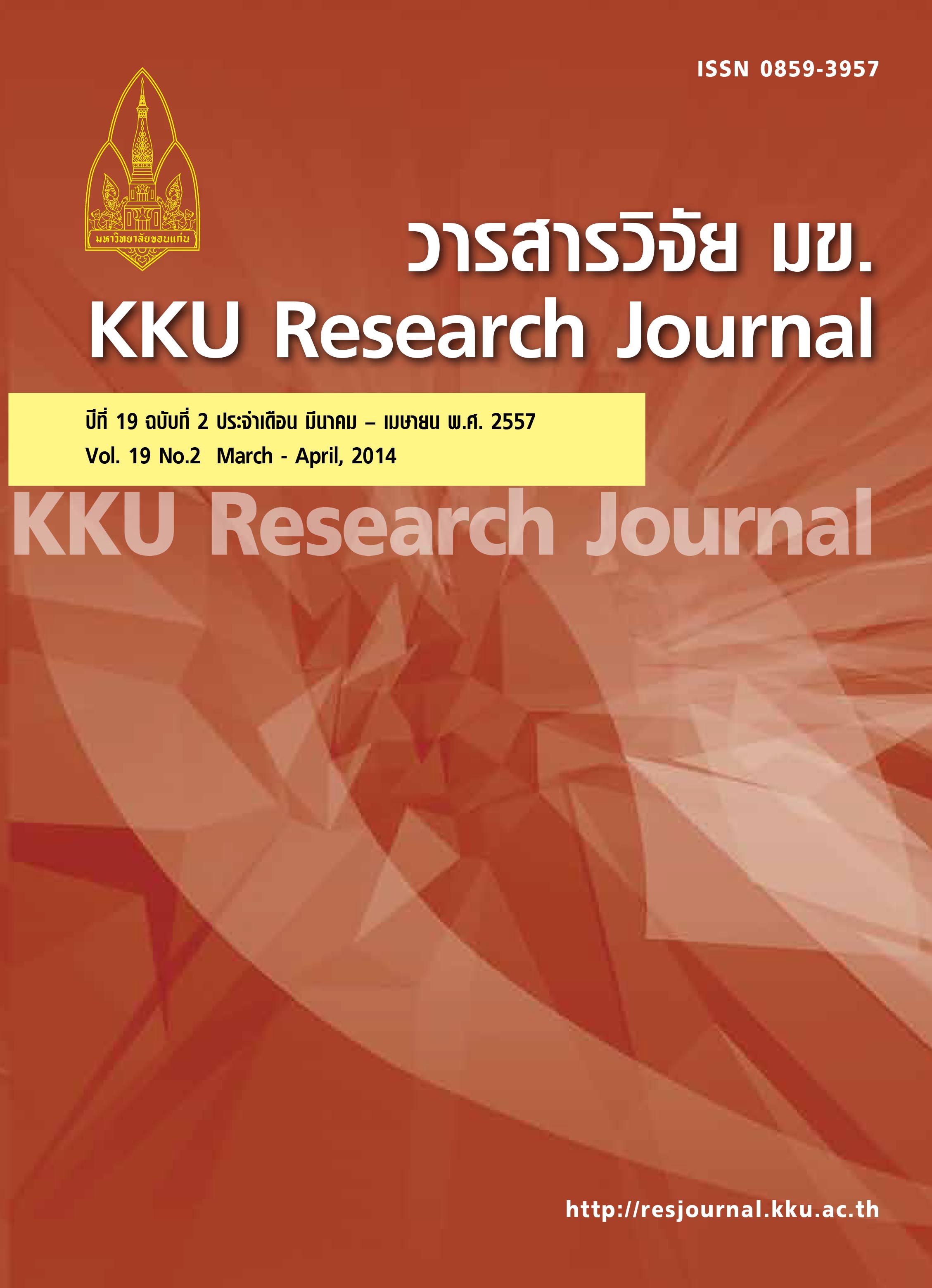Exposure to benzene among workers in gasoline stations: a case study in Khon Kaen municipality, Muang Khon Kaen
Main Article Content
Abstract
The aims of this survey study were to investigate route of exposure to benzene and benzene concentrations in working environments of workers in gasoline stations by a case study in Khon Kaen municipality, Khon Kaen province (n=34). Data were collected by a structured questionnaire, a survey form and air monitoring for benzene concentra-tions from seven stations and analysis with Gas Chromatography (GC-FID). All workers potentially exposed to benzene through gasoline inhalation, followed by direct contact through a skin and food ingestion in an equal percent-age (97.06%). Work position of fuelling had the highest frequency on benzene exposure through food ingestion and inhalation route. The concentrations of benzene in working environment were ranged between 0.019 - 0.050 ppm. Those levels did not exceed 50% of recommended exposure limit by NIOSH (0.1 ppm). Most workers did not use personal protective equipment (used mask = 26.47%). The suggestions were that there should be safety at work training provided to workers and employers should perform the health surveillance program among workers annually.
Article Details
How to Cite
Pimpasaeng, C., & Chaiklieng, S. (2017). Exposure to benzene among workers in gasoline stations: a case study in Khon Kaen municipality, Muang Khon Kaen. Asia-Pacific Journal of Science and Technology, 19(2), 354–361. retrieved from https://so01.tci-thaijo.org/index.php/APST/article/view/82944
Section
Research Articles

